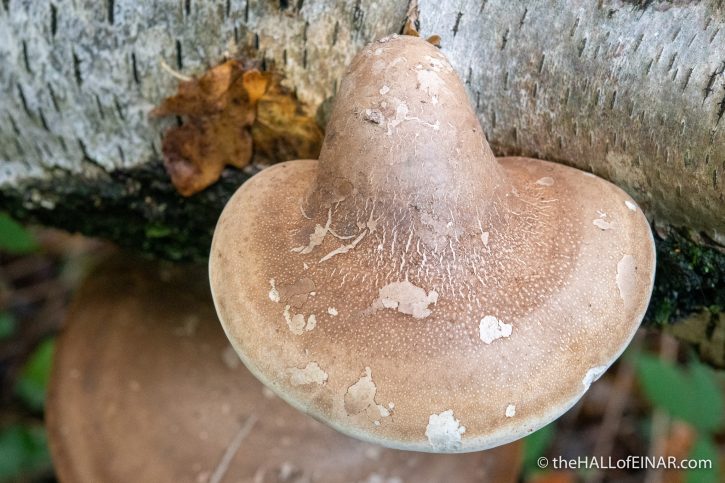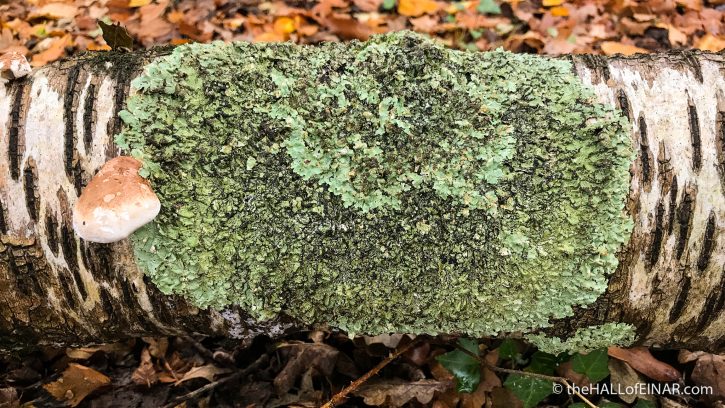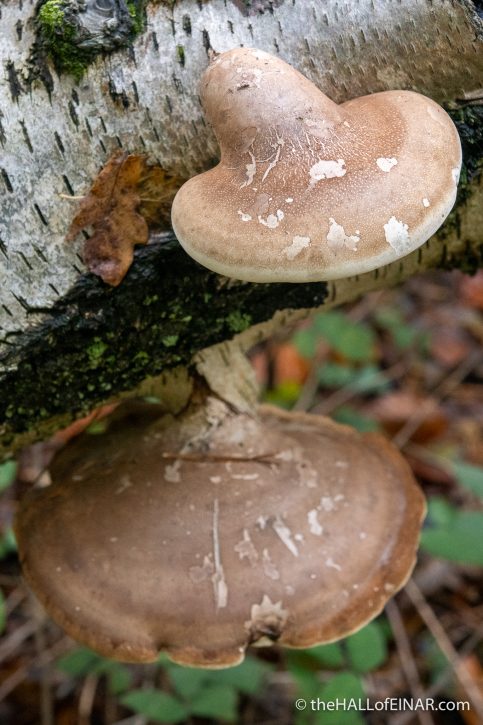Birch Brackets and extinct elephants
This Birch Bracket fungus is Piptoporous betulinus. It looks like a bicycle saddle here. I almost expect it to have springs underneath like an old-fashioned leather saddle.
I’ve photographed them before. Last time it looked like a Cornish Pasty:
My friend swears by a tea made from dried strips of them. Full of anti-oxidents, apparently.:
I love the cracked and crazy patterning on them (as always, just click to enlarge).

It’s one of the most common fungi of woodland if, of course, it has Birch trees.
On the way home I spot another Birch. It has a small Birch Bracket and the most incredible lichen growing on it.

Those black Zebra stripes on the Birch are very distinctive, aren’t they? Why are they there? A key function is probably to stop elephant attack. Elephants like to strip bark off trees in long strips and having natural breaks in the bark frustrates elephants from ripping it all off in one strip. They must have been as annoyed as I am trying to get Sellotape off the roll at Christmas.
The Straight-Tusked Elephant, Palaeoloxodon antiquus, a four metre high British species, became extinct here over 100,000 years ago, but still lived in Europe until before the last ice age. Birch trees are still stripy long after the Elephants which preyed upon them have become extinct.
